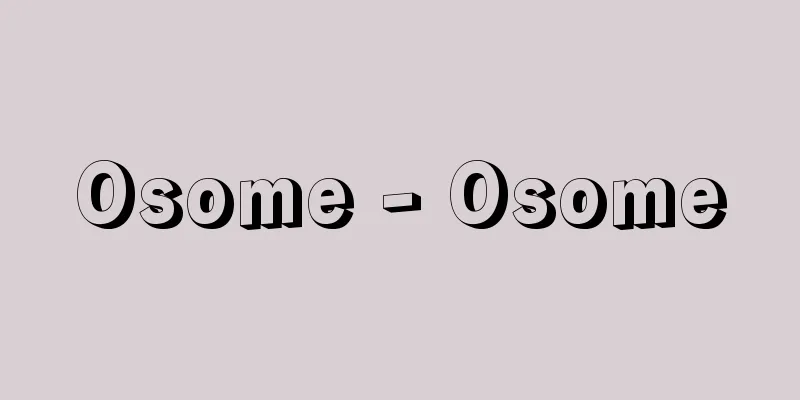Yin-yuan Long-qi (English spelling)

|
[Birth] Wanli 20 (1592).11.4. Fuzhou, Fuqing [Died] Kanbun 13 (1673). 4.3. Uji, China. A monk from the late Ming Dynasty, the founder of the Obaku sect in Japan. His secular surname was Hayashi, his given name was Zeng Bing, and his pen name was Zifang. He was from a poor family and worked as a farmer and lumberjack, but lost his mother at a young age. At the age of 29, he became a monk under Kangen Koju of the local Obakusan Manpuku-ji temple, and after traveling around Japan to study and learn about the Rinzai sect, he succeeded the head priest of Manpuku-ji temple, Feiin Tsuyoshi, and worked to promote Rinzai Zen. In 1654, at the age of 63, he came to Japan at the invitation of Isan Seiyu, the head priest of Kofuku-ji temple in Nagasaki. He first worked at Kofuku-ji temple in Nagasaki and then at Sofuku-ji temple, and in 1655 he entered Fumon-ji temple in Tomita, Settsu Province, and in 1658 he had an audience with the shogun Tokugawa Ietsuna in Edo. In Kyoto, he received the support of Bun'ei, a nun who served Emperor Gomizunoo's mother, Chuwamon'in, and through her he gained the trust of the emperor and the nobles. In the second year of the same year, Emperor Gomizunoo bestowed land on Uji, and in 1661, with the imperial order of Ietsuna, he founded Obakusan Manpuku-ji Temple. He later handed over his position as abbot to Mokuan Seiko, and spent his later years in the Shokakudo Hall within the temple. He passed away at the age of 82. He was given the title Daikofusho Kokushi by Emperor Gomizunoo. When Ingen came to Japan, various aspects of Chinese culture were introduced, and art such as painting, calligraphy, and sculpture had a great influence on Japan (→ Obaku School). Ingen himself excelled in calligraphy and was praised as one of the three calligraphers of Obaku. He also brought with him ingredients such as kidney beans, watermelons, and bamboo shoots, as well as vegetarian fucha cuisine using these ingredients, and musical instruments such as mokugyo. His many works include "Obaku Seiki" and "Obaku Sanji." Source: Encyclopaedia Britannica Concise Encyclopedia About Encyclopaedia Britannica Concise Encyclopedia Information |
|
[生]万暦20 (1592).11.4. 福州,福清 [没]寛文13 (1673).4.3. 宇治 中国,明末の僧,日本の黄檗宗の開祖。俗姓は林,諱(いみな)は曾炳,子房と号した。家は貧しく農耕,きこりを業としているうちに若くして母を失った。29歳で地元の黄檗山萬福寺の鑑源興寿について出家,各地を修行行脚ののち臨済宗を学び,萬福寺住職の費隠通容の跡を継いで臨済禅の宣揚に努めた。承応3(1654)年,63歳で長崎の興福寺住持逸然性融の招きにより来朝,初め長崎興福寺,さらに崇福寺を経て,明暦1(1655)年摂津国富田の普門寺に入り,万治1(1658)年には江戸で将軍徳川家綱に謁見した。京都でも後水尾天皇の母,中和門院に仕えた文英尼の帰依を受け,同尼を通じて,天皇はじめ公家の信望を得た。同 2年には後水尾天皇より宇治に地を賜り,家綱の上旨もあって寛文1(1661)年黄檗山萬福寺を創建した。のちに住持の席を木庵性瑫に譲り,晩年を寺内の松隠堂で送った。82歳で示寂。後水尾上皇から大光普照国師の号を賜る。隠元の来日によってさまざまな中国文化が伝えられ,絵画,書,彫刻などの美術は日本に大きな影響を与えた(→黄檗派)。隠元自身も書に優れ,黄檗の三筆の一人とたたえられた。また,インゲンマメ,スイカ,モウソウチク(たけのこ)といった食材,およびそれらを使用した精進料理の普茶料理,木魚などの楽器ももたらされた。著作に『黄檗清規』『黄檗山志』など多数。 出典 ブリタニカ国際大百科事典 小項目事典ブリタニカ国際大百科事典 小項目事典について 情報 |
<<: Parrot ananas - Parrot ananas
>>: Ingen Kettle - Green Bean Kettle
Recommend
game reserve
…Most of the national parks in Africa are for the...
Plating - plating
[Noun] (Suru) 1. (From the fact that the gold amal...
Restoration paper fee - Kangonshiryo
A historical research essay from the late Edo peri...
Image processing
Machine processing of visual information such as ...
Mexicali (English spelling)
The capital of Baja California in northwestern Mex...
Mirounga
...A general term for mammals in the genus Miroun...
Guanzi - Kanshi
A philosophical book that includes works of vario...
Cudonia circinans (English spelling) Cudonia circinans
…Distributed worldwide, it can be found throughou...
Chiriguano (English spelling)
A Guarani slash-and-burn agricultural people who l...
Hinai [town] - Hinai
A former town in Kitaakita County in northern Akit...
Montague grammar
Montague grammar, also known as logical grammar, i...
Leisure - Leisure (English spelling)
It is translated as leisure. It comes from the La...
Psychic photography - shinreishashin (English spelling)
A photograph that shows an image that is not norma...
Jersey
〘noun〙 (jersey)⸨jersey⸩① (from its use as clothing...
Rynchops albicollis (English spelling) Rynchopsalbicollis
… [Yanagisawa Norio]. … *Some of the terminology ...









